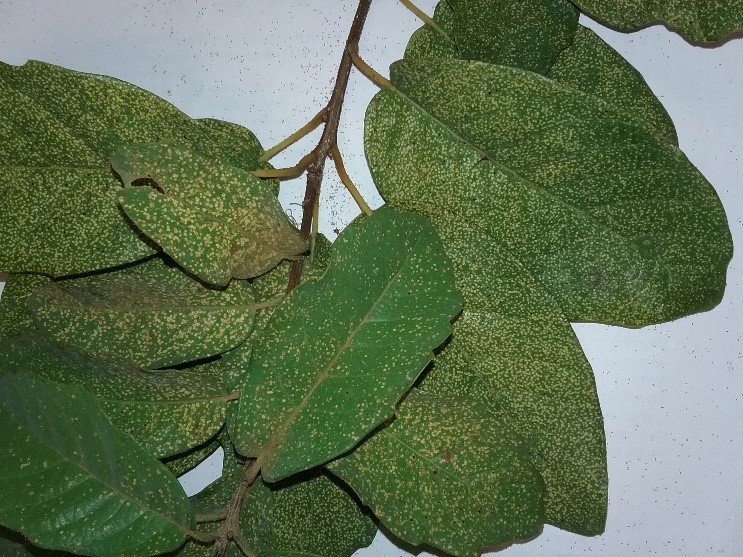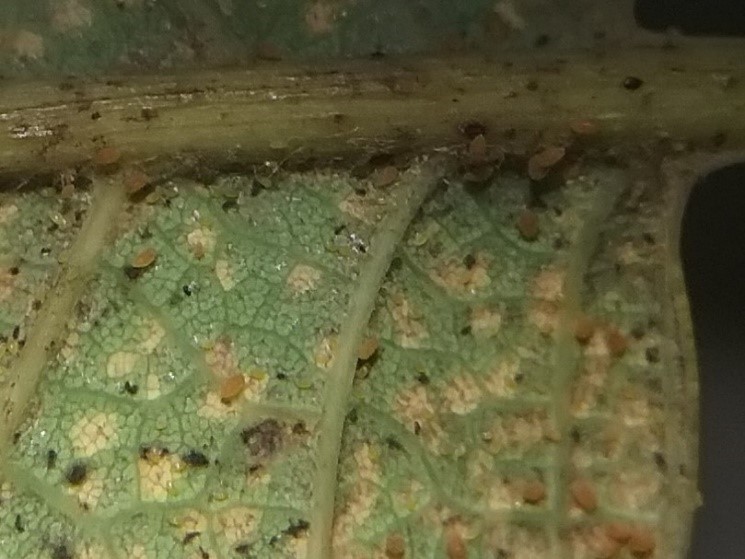The weather this year has brought on a range of atypical landscape pest outbreaks. Most recently, a Mexican White Oak branch was brought in to our office covered with small white dots. After a quick scope inspection of the lower side of the leaves, we spotted hundreds of very small yellow aphids.
Aphids in the home landscape can vary in appearance and in the food they prefer. To view the many species of native aphids, review Bug Guide at https://bugguide.net/node/view/147. Aphid populations rise and fall throughout the year, based off environmental conditions and the presence of natural predators, mostly going unnoticed.
In some cases, environmental conditions and the lack of natural predator populations can cause outbreaks in populations that may warrant temporary efforts on your part to minimize these populations and their impacts on your landscape plants.
It is advised to regularly scout your landscape for early detection of plant pests such as aphids. Symptoms would include yellow or spotted leaves, curled new growth, and the presence of glaze-like honeydew or black sooty mold on the upper surface of leaves. The earlier you can catch outbreaks, the easier it is to respond to: considering the environment, your time and energy, and your pocketbook!
The publication below lays out some good game rules on controlling aphids. The most important part is to not unintentionally harm local beneficial pest predator populations in your control response. This is done by: 1. Simply spraying the underside of the leaves to dislodge the pests, 2. Spraying populations directly with a mild soap or oil solution to impact numbers, and to 3. Introduce beneficial insects such as ladybeetles or lacewings into the area.
https://extension.colostate.edu/topic-areas/insects/aphids-on-shade-trees-and-ornamentals-5-511/
Avoid resulting to the use of chemical insecticides until you’ve exhausted the strategies above and there is economic loss on your part, such as the desired plant declining or dying. These are the fundamentals behind Integrated Pest Management, commonly referred to as IPM.
We’d love to help you identify your landscape pest or disease issues. Reach out to the Fort Bend County Master Gardener hotline for garden advice based on proven research-based strategies. Hotline volunteers are in the office Monday through Friday from 9 to 11 am and can be reached in-person, phone, or by email. Visit https://fbmg.org/contact/ for more information.

Oak leaves showing small white/yellow dots on upper surface. Photo credit: JB Holladay

Underside of oak leaf using scope showing population of yellow aphid. Photo credit: JB Holladay
Authored by James Boone Holladay
County Extension Agent – Horticulture
Texas A&M AgriLife Extension
Fort Bend County
